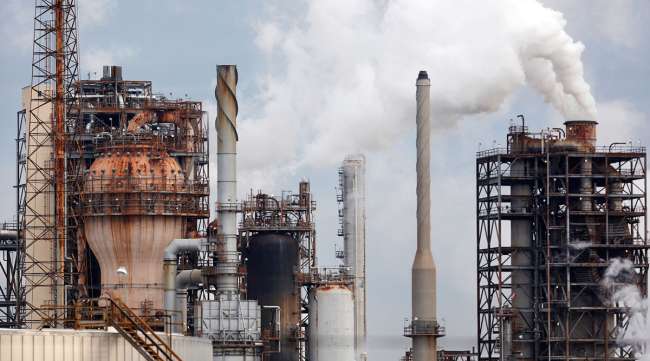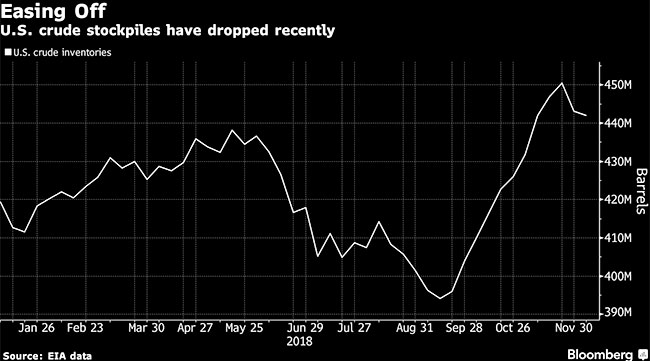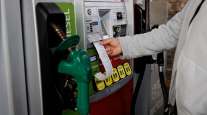Oil Gains Near $52 as OPEC Cuts Weighed Against US Supply Rise

Oil was boosted to near $52 a barrel by a weak U.S. dollar while investors weighed if OPEC and its allies can successfully re-balance the market.
Futures in New York gained as much as 1.1%. The number of oil rigs in the U.S. fell to the lowest in eight weeks and the dollar slipped on Dec. 17, boosting crude. Investors continue to grapple with concern that rising American supply will quash any price rallies. Hedge funds slashed bullish bets on U.S. oil to the lowest in more than two years, showing they aren’t buying into the OPEC+ coalition’s production cuts just yet.
Crude remains near its lowest level in more than a year despite OPEC and its allies pledging larger-than-expected output curbs and the prospect that unplanned losses in Iran and Venezuela will exacerbate the group’s cuts. Both the International Energy Agency and OPEC have warned of a potential supply surplus next year. Still, U.S. crude inventories have dropped for two weeks and persistent infrastructure bottlenecks could limit immediate production increases in shale fields.

“The dollar’s weakness is pushing up oil today,” said Giovanni Staunovo, a commodities analyst at UBS Group AG. “The oil market will tighten beyond current bearish expectations over the coming months as Iranian and Venezuelan output is likely to fall further.”
The Bloomberg Dollar Index, which tracks a basket of 10 leading global currencies against the U.S. currency, fell as much as 0.2% after gaining 0.7% the week of Dec. 10. A weaker greenback makes dollar-priced commodities more attractive.
U.S. drillers will produce an average 12.06 million barrels a day next year, up from 10.88 million in 2018, the country’s Energy Information Administration said last week. Weekly crude output remains near a record high even as Baker Hughes data on Dec. 14 showed working oil rigs fell by four to 873 last week.
Surging American production has also made the Bank of Russia skeptical on the success of the OPEC+ cuts. The country’s central bank reduced its crude price outlook for next year to $55 a barrel from $63 as it sees the risk of the output curbs countered by a rise in U.S. shale supplies.




